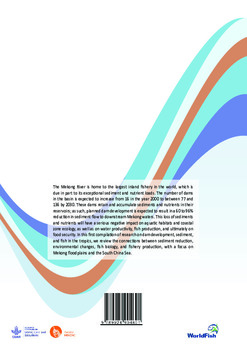Fish, sediment and dams in the Mekong

Citation
Baran, E.; Guerin, E.; Nasielski, J. (2015). Fish, sediment and dams in the Mekong. Penang, Malaysia: WorldFish, and CGIAR Research Program on Water, Land and Ecosystems
The Mekong River is home to the largest inland fishery in the world, which is due in part to its exceptional sediment and nutrient loads. The number of dams in the Basin is expected to increase from 16 in the year 2000 to between 77 and 136 by 2030. These dams retain and accumulate sediments and nutrients in their reservoirs; as such, planned dam development is expected to result in a 60% to 96% reduction in sediment flow to downstream Mekong waters. This loss of sediments and nutrients will have a serious negative impact on aquatic habitats and coastal zone ecology, as well as on water productivity, fish production, and ultimately on food security. In this first compilation of research on dam development, sediment, and fish in the tropics, the authors review the connections between sediment reduction, environmental changes, fish biology, and fishery production, with a focus on Mekong floodplains and the South China Sea.
Permalink
Date Available
Type
Publisher
Copyright
CC BY 4.0
Research Themes